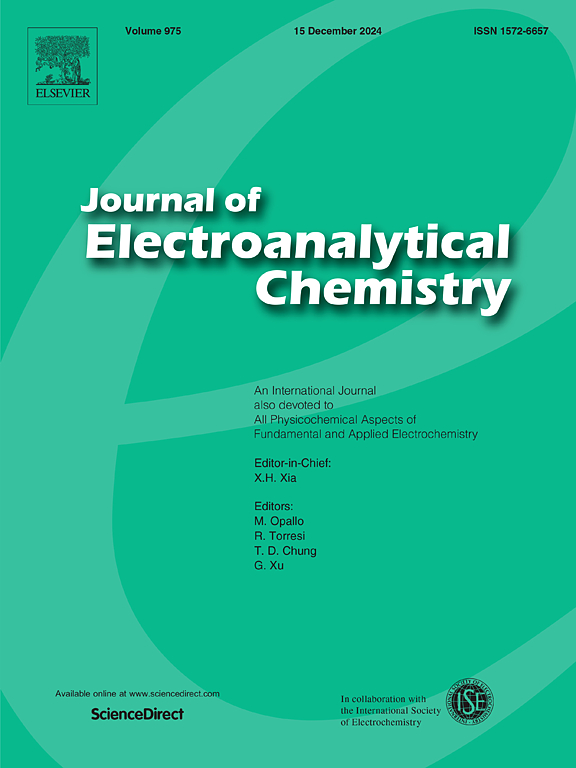One-step synthesis of dendritic nanostructured single crystal NiSe electrocatalyst for hydrogen evolution reaction
IF 4.1
3区 化学
Q1 CHEMISTRY, ANALYTICAL
引用次数: 0
Abstract
A novel dendritic nanostructure NiSe has been synthesized for electrocatalytic hydrogen evolution reaction (HER) through a hydrothermal method. The micromorphology and microstructure characterizations show that the branches of the dendritic NiSe are epitaxially grown on the trunk, and individual nickel selenide dendrites have three-dimensional structures with four branches in short axes. The nanostructures of each branch are paralleled to each other in the same plane, and are perpendicular to the trunk with the same crystal orientation. The dendritic NiSe catalyst demonstrates highly efficient HER activity with a low overpotential of 191 mV and a small Tafel slope of 47 mV dec−1 in acidic solutions. The remarkable enhancement of the dendritic NiSe in the HER performance can be attributed to its dense dendritic nano-structure, and high specific surface area, which provide effective diffusion channels and much more catalytic sites towards the HER. This achievement provides a new method for producing cheap and efficient dendritic nanostructures catalysts for water splitting.
一步合成用于氢气进化反应的树枝状纳米结构单晶 NiSe 电催化剂
通过水热法合成了用于电催化氢进化反应(HER)的新型树枝状纳米结构硒化镍。微观形貌和微观结构表征表明,树枝状硒化镍的分支是在主干上外延生长的,单个硒化镍树枝状物具有三维结构,短轴上有四个分支。每个树枝的纳米结构在同一平面内相互平行,并以相同的晶体取向垂直于主干。树枝状 NiSe 催化剂在酸性溶液中具有 191 mV 的低过电位和 47 mV dec-1 的小 Tafel 斜坡,表现出高效的 HER 活性。树枝状 NiSe 的 HER 性能之所以能显著提高,是因为其致密的树枝状纳米结构和高比表面积为 HER 提供了有效的扩散通道和更多的催化位点。这一成果为生产廉价高效的树枝状纳米结构催化剂提供了一种新方法。
本文章由计算机程序翻译,如有差异,请以英文原文为准。
求助全文
约1分钟内获得全文
求助全文
来源期刊
CiteScore
7.80
自引率
6.70%
发文量
912
审稿时长
2.4 months
期刊介绍:
The Journal of Electroanalytical Chemistry is the foremost international journal devoted to the interdisciplinary subject of electrochemistry in all its aspects, theoretical as well as applied.
Electrochemistry is a wide ranging area that is in a state of continuous evolution. Rather than compiling a long list of topics covered by the Journal, the editors would like to draw particular attention to the key issues of novelty, topicality and quality. Papers should present new and interesting electrochemical science in a way that is accessible to the reader. The presentation and discussion should be at a level that is consistent with the international status of the Journal. Reports describing the application of well-established techniques to problems that are essentially technical will not be accepted. Similarly, papers that report observations but fail to provide adequate interpretation will be rejected by the Editors. Papers dealing with technical electrochemistry should be submitted to other specialist journals unless the authors can show that their work provides substantially new insights into electrochemical processes.

 求助内容:
求助内容: 应助结果提醒方式:
应助结果提醒方式:


